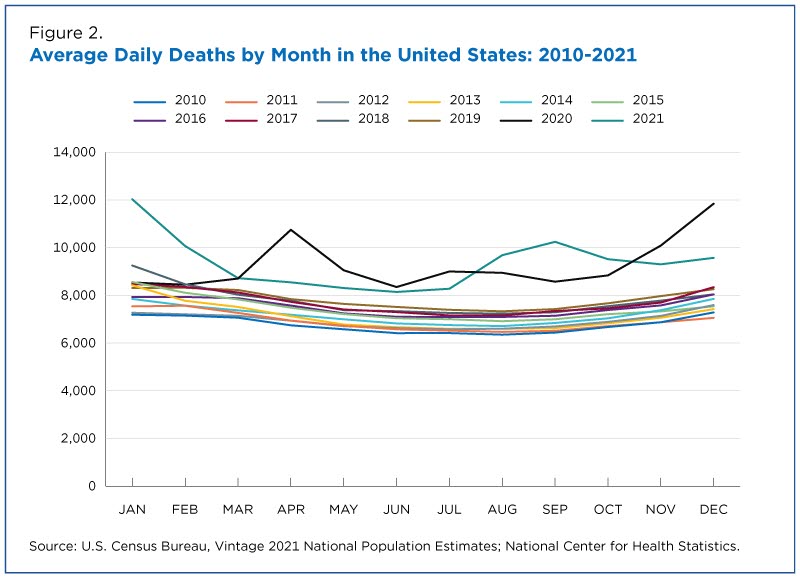Apple seems to disagree with you.
- 0 Posts
- 24 Comments

 11·3 months ago
11·3 months agoSo yeah, it was about minors (children) trapped in a cave, not miners (the profession).
But in fairness, the Chilean miners I was thinking of was back in 2010.

 16·3 months ago
16·3 months agoI think that was a trapped minor incident. The trapped miner incident happened around the same time, but didn’t involve Elon.

 12·3 months ago
12·3 months agoFrom here it seems 3 would be normal, one for trash, recycling, and yard waste. But that house has three bins dedicated to trash pickup every week, which seems like a lot.

 5·3 months ago
5·3 months agoProbably to sarcastically mimic the rationale/excuses of people that defend Israel. I feel pretty confident assuming that Albert doesn’t actually think there are cases where torture and rape are justifiable.

 7·3 months ago
7·3 months agoAnd if you’re only interested in a brand new game every two months (on average), you could just buy the games at full price on release day.

 114·3 months ago
114·3 months agoThe VA did the same thing in a newsletter they send out.


 11·3 months ago
11·3 months agoA duo of Tesla shareholder-influencers tried to complete Elon Musk’s coast-to-coast self-driving ride that he claimed Tesla would be able to do in 2017 and they crashed before making it about 60 miles.
From the article. I don’t think the Bearded Tesla Guy youtube channel was trying to have their tesla fail so quickly and spectacularly. I think they just wanted to rely fully on self driving and got unlucky with something being in the middle of the road.

 8·4 months ago
8·4 months agoSYSTEM REQUIREMENTS MINIMUM:
Requires a 64-bit processor and operating system OS: Windows 10 / Windows 11 Processor: Intel Core i7-9700 / AMD Ryzen 7 2700X Memory: 16 GB RAM Graphics: NVIDIA GeForce RTX 2070 / AMD Radeon RX 5700 XT / Intel Arc A580 Storage: 100 GB available space Additional Notes: Requires a 64-bit processor and operating system. Requires 8 CPU Cores for processor. Requires 8 GB VRAM for graphics. SSD storage required

 391·6 months ago
391·6 months agoThe Anti-Defamation League (ADL), a nonprofit focused on combating antisemitism, defended tech billionaire Elon Musk’s “awkward” gesture during a Monday celebratory event which some critics panned as a fascist salute.
“This is a delicate moment. It’s a new day and yet so many are on edge. Our politics are inflamed, and social media only adds to the anxiety,” the ADL wrote in a Monday post on Musk’s social platform X. “It seems that @elonmusk made an awkward gesture in a moment of enthusiasm, not a Nazi salute, but again, we appreciate that people are on edge.”
From the Hill if anyone else wanted to know more.

 2·8 months ago
2·8 months agoThe Grand Collection is out now and is currently on sale at 50% off. The collection is available on Nintendo and PlayStation platforms, though please note that the PlayStation version does not appear to include The Force Unleashed or the Knights of the Old Republic games.
The steam bundle is older, more expensive, and has more games in it. This is announcing that you can now buy some old star wars games for switch and playstation.
Unfortunately, they predicted a bad actor getting access to their server/devices. Reality is even stupider since someone accidentally included a journalist in their classified group chat.

 31·10 months ago
31·10 months agoI’m assuming they’re thinking about this
A pseudonymous coder has created and released an open source “tar pit” to indefinitely trap AI training web crawlers in an infinitely, randomly-generating series of pages to waste their time and computing power. The program, called Nepenthes after the genus of carnivorous pitcher plants which trap and consume their prey, can be deployed by webpage owners to protect their own content from being scraped or can be deployed “offensively” as a honeypot trap to waste AI companies’ resources.
Which was posted here a while back

 4·10 months ago
4·10 months agoTo stream remotely starting on April 29, 2025, you will need a Remote Watch Pass or Plex Pass subscription on your account or the admin of the Plex Media Server from which you stream will need a Plex Pass subscription on their account.
Everyone using your server should be fine.

 12·1 year ago
12·1 year agoAll the carbon removal equipment in the world is only capable of removing around 0.01 million metric tons of carbon a year, a far cry from the 70 million tons a year needed by 2030 to meet global climate goals, according to the International Energy Agency.
There are already much bigger DAC plants in the works from other companies. Stratos, currently under construction in Texas, for example, is designed to remove 500,000 tons of carbon a year, according to Occidental, the oil company behind the plant.
But there may be a catch. Occidental says the captured carbon will be stored in rock deep underground, but its website also refers to the company’s use of captured carbon in a process called “enhanced oil recovery.” This involves pushing carbon into wells to force out the hard-to-reach remnants of oil — allowing fossil fuel companies to extract even more from aging oil fields.
I don’t know what you’re talking about, everything seems fine here.

 19·1 year ago
19·1 year agohttps://www.ipcc.ch/report/ar6/syr/
I’m looking at the Full Volume, and on page 71 you can see
With about 2°C warming, climate-related changes in food availability and diet quality are estimated to increase nutrition-related diseases and the number of undernourished people, affecting tens (under low vulnerability and low warming) to hundreds of millions of people (under high vulnerability and high warming) … Climate change risks to cities, settlements and key infrastructure will rise sharply in the mid and long term with further global warming, especially in places already exposed to high temperatures, along coastlines, or with high vulnerabilities (high confidence).
At global warming of 3°C, additional risks in many sectors and regions reach high or very high levels, implying widespread systemic impacts, irreversible change and many additional adaptation limits (see Section 3.2) (high confidence). For example, very high extinction risk for endemic species in biodiversity hotspots is projected to increase at least tenfold if warming rises from 1.5°C to 3°C (medium confidence). Projected increases in direct flood damages are higher by 1.4 to 2 times at 2°C and 2.5 to 3.9 times at 3°C
Global warming of 4°C and above is projected to lead to far-reaching impacts on natural and human systems (high confidence). Beyond 4°C of warming, projected impacts on natural systems include local extinction of ~50% of tropical marine species (medium confidence) and biome shifts across 35% of global land area (medium confidence). At this level of warming, approximately 10% of the global land area is projected to face both increasing high and decreasing low extreme streamflow, affecting, without additional adaptation, over 2.1 billion people (medium confidence) and about 4 billion people are projected to experience water scarcity (medium confidence). At 4°C of warming, the global burned area is projected to increase by 50 to 70% and the fire frequency by ~30% compared to today
However, if you really want to get into it, you can read the Climate Change 2022: Impacts, Adaptation and Vulnerability Full Report. It has a lot more details about the effects of climate change on all parts of the world, but it’s also a 3,000 page pdf.

 5·2 years ago
5·2 years agoYou should probably be looking at trends over a longer period of time, rather than just a single month.

From here. There was a dip below the 2016-2019 average in January through March of 2023, but time marches on.

 61·2 years ago
61·2 years agoThe numbers for 2023 are no higher than normal either
The numbers for 2023 in the 2-3 months you have data for. Look at the rest of the graph, how it starts off lower in January and is higher for the rest of the year. Go back up and look at this graph

and see how covid comes in waves each year, not evenly distributed throughout. Then go back and look at this graph

and see that based on the data we have in the US, deaths per year has stayed above the previous yearly patterns. We don’t have all the data over a long period of time because covid hasn’t been around for all that long. But from what we can see so far, it kills people. The exact number per year remains to be seen, but from the data we have it’s been in the thousands, just in Norway.
Edit: I guess next time I see a fucking “mOVInG tHe GOOalPoSt!!!” I will take the clue and not fucking bother.
Half of the sources you posted actively worked against your own arguments. Maybe you shouldn’t bother.
EDIT of my own: After looking at one of your sources (Eurostat)

you can see that January-March was lower than 2016-2019, but it’s been on the rise again across the EU, and especially in Norway. Again, you can’t just look at one single month and decide that it’s representative of everything, everywhere, across all time going forward.

 52·2 years ago
52·2 years agoFrom that we can conclude that after an initial burst in death numbers, as covid and other viruses passes through the populace, death rates return to normal.
I mean, no, we really can’t. There’s not enough data available (that I’m willing to search for) to say for absolutely sure that excess deaths has increased and will stay high, but even just the snapshot you provided here shows that it’s slightly lower in January, and massively higher the rest of the year. Maybe the May 2023 data shows that the numbers are evening out compared to 2016-2019, but the one year we actually get to see shows way more excess deaths over the course of a year compared to before. You can’t just look at the most recent month, that’s not how yearly trends and averages work.
You won’t have much of an argument that the numbers are going back to “normal” until you’ve got closer to a full year’s worth of data with that excess deaths line being close to zero.
They’re probably out “not being political” and are ignorant to most curent events.